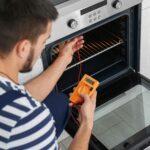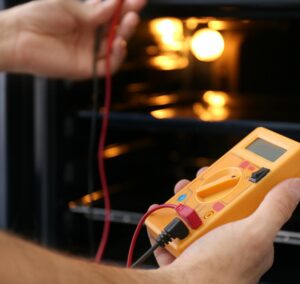Safety is paramount when it comes to using any home appliances, including the ones in your kitchen. Your oven is essential for ensuring proper cooking and preparation, but it could become a hazard if you do not make the time for home oven safety checks. Restaurants and other commercial establishments are not the only places that should have their ovens inspected for safety. Even if it isn’t legally required, home oven safety checks can only make your life better.
Your Guide To Home Oven Safety Checks: 5 Tips & Tricks
Although it might seem tedious, you will be thankful in the long term for home oven safety checks. This routine is a great way to see if all the parts of your oven are working properly, allow you to take preventative measures against potential problems, and ensure the safety of your home. Here are just a few guidelines to keep in mind when performing your own oven safety checks:
1. Keep Everything Clean
The key to overall oven safety checks is to keep everything clean. Allowing grease and other food particles to build up inside your oven will not only overwork it; it will also create a safety hazard. More specifically, you could be putting your oven at risk of setting on fire, and the last thing you want to deal with is a grease fire in your kitchen. Additionally, you should never use your oven for storage; you might forget that you put something in it before you turn it on, leading to disastrous results.
2. Test The Safety Valve And Igniter
To further ensure the safety of your oven, make time to test the safety valve and igniter. Testing the igniter involves inserting a multimeter into the igniter terminals and seeing if it shows anywhere from 80 to 175 ohms of resistance. The presence of resistance means your igniters are working properly; otherwise, they might need replacing. As for the safety valve, the resistance levels should be around 1 or 1.5 ohms, as that is how you know there is continuity. If the continuity is absent, you must call an appliance repair technician to repair or replace your oven’s safety valve.
3. Take Care Of The Burners
If your oven has a stovetop with burners, you also want to keep those clean and ensure they are ignited during operation. Letting burners run without a flame can lead to the release of toxins or even a gas leak. If the burners fail to ignite, you will need to call an appliance repair technician for assistance right away.
4. Ensure Proper Ventilation And Air Quality
To ensure that your oven remains safe to use in your kitchen, you want to maintain a functional ventilation system. If your oven has a fan on the inside, have a technician see if it’s working properly. It’s also important to have proper airflow throughout your kitchen to ensure good quality.
5. Check For Any Signs Of Leaks
Finally, one of the most vital parts of any oven safety check is to look for any signs of leaks, especially if you own a gas oven and stovetop. The most obvious sign of a leak is the presence of strange or unusual smells coming from this appliance. If it’s not clear whether or not a leak is present, you can buy your own gas detector or hire a professional to do the job.
Call Appliance Repair Grand Prairie To Check Your Oven’s Safety!
Hopefully, you feel prepared to carry out your own home safety inspection with these five tips and tricks. While some of these tasks can easily be done yourself, it’s important to know which ones you would rather leave in professional hands. Luckily, you can contact us at Appliance Repair Grand Prairie for all your oven and kitchen appliance maintenance and repair needs.


